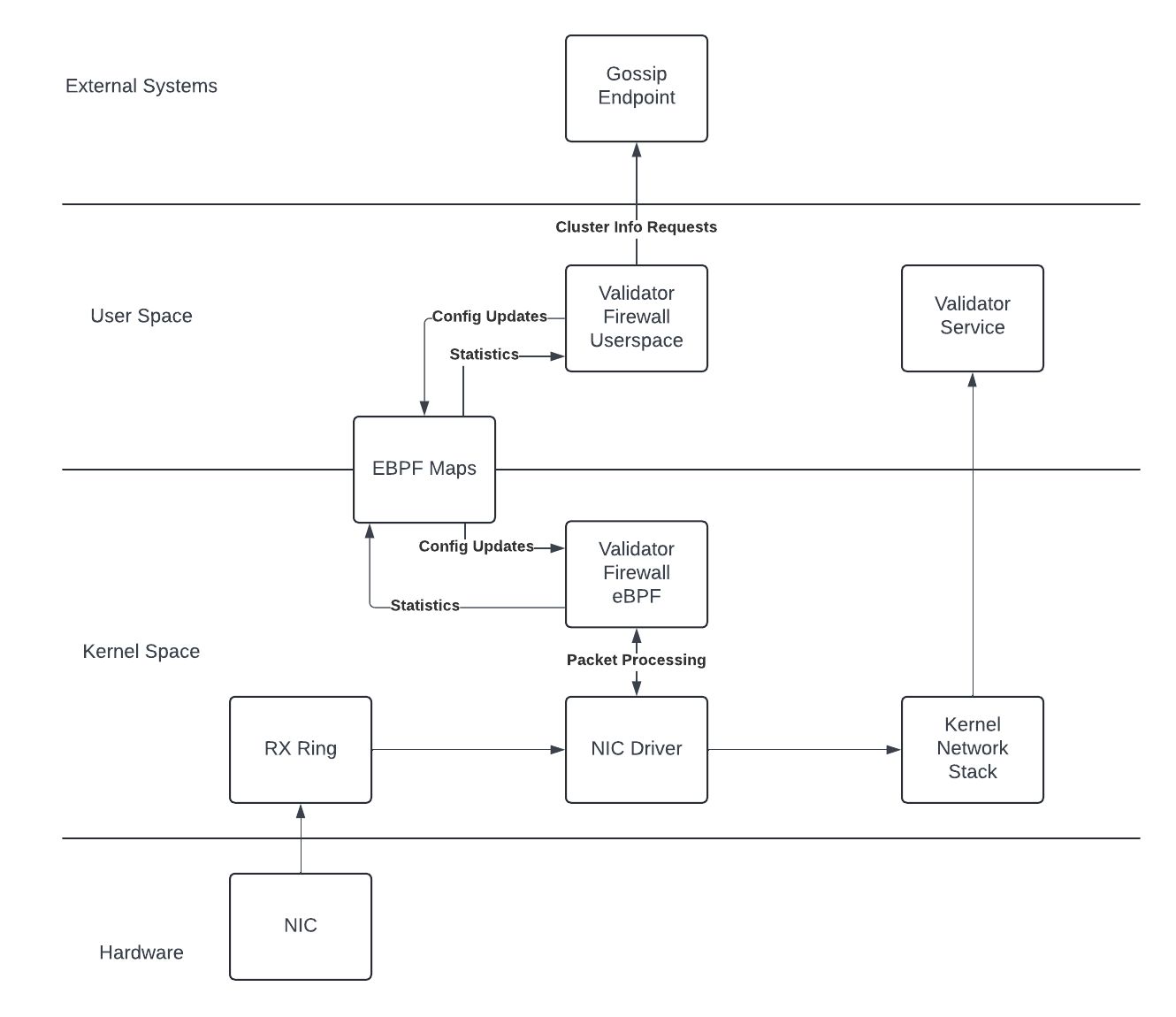Low level blocking for validator nodes. This project is a work in progress and interfaces may change.
- Install nightly components:
rustup toolchain install nightly --component rust-src - Install bpf-linker:
cargo install bpf-linker
There is a bug with bpftool and the default kernel installed by the distribution. To avoid running into it, you can install a newer bpftool version that does not include the bug with:
sudo apt install linux-tools-5.8.0-63-generic
export PATH=/usr/lib/linux-tools/5.8.0-63-generic:$PATH
Bond interfaces are not supported.
The project is split into two main components: an eBPF program that runs in the context of the network driver and a userspace program that configures it. The raw bytes of the eBPF program are linked into the userspace program and the executable is loaded into the kernel on start. The userspace program is responsible for setting up the eBPF maps (shared memory between the eBPF program and the userspace program), pushing in external data, and reporting stats.
By default, all non-gossip traffic is blocked on protected ports. Additional hosts can be configured to be allowed when not in gossip, or denied (even when in gossip). This is configured via a static overrides file using the following format:
allow:
- name: "host1"
ip: 1.2.3.4
- name: "host2"
ip: 4.5.6.7
deny:
- name: "spammer"
ip: 8.9.10.11cargo xtask build-ebpfTo perform a release build you can use the --release flag.
You may also change the target architecture with the --target flag.
cargo build#If -p is not specified, we only act on 8009, 8010
RUST_LOG=info cargo xtask run --release -- --iface <iface> --static-overrides <path_to_static_overrides.yaml> -p 8004 -p 8005 -p 8006This should be run under a user with the CAP_NET_ADMIN capability. This is required to load the eBPF program and to set the XDP program on the interface.
The install_service.sh script (uses sudo) can create a basic systemd unit file and overrides config.
In general, the eBPF component should be as lightweight and as fast as possible. It's in the datapath, so we need to do as little work there as we can.
Some background reading on why XDP: How to Drop 10M Packets per Second
This project heavily uses Aya.
